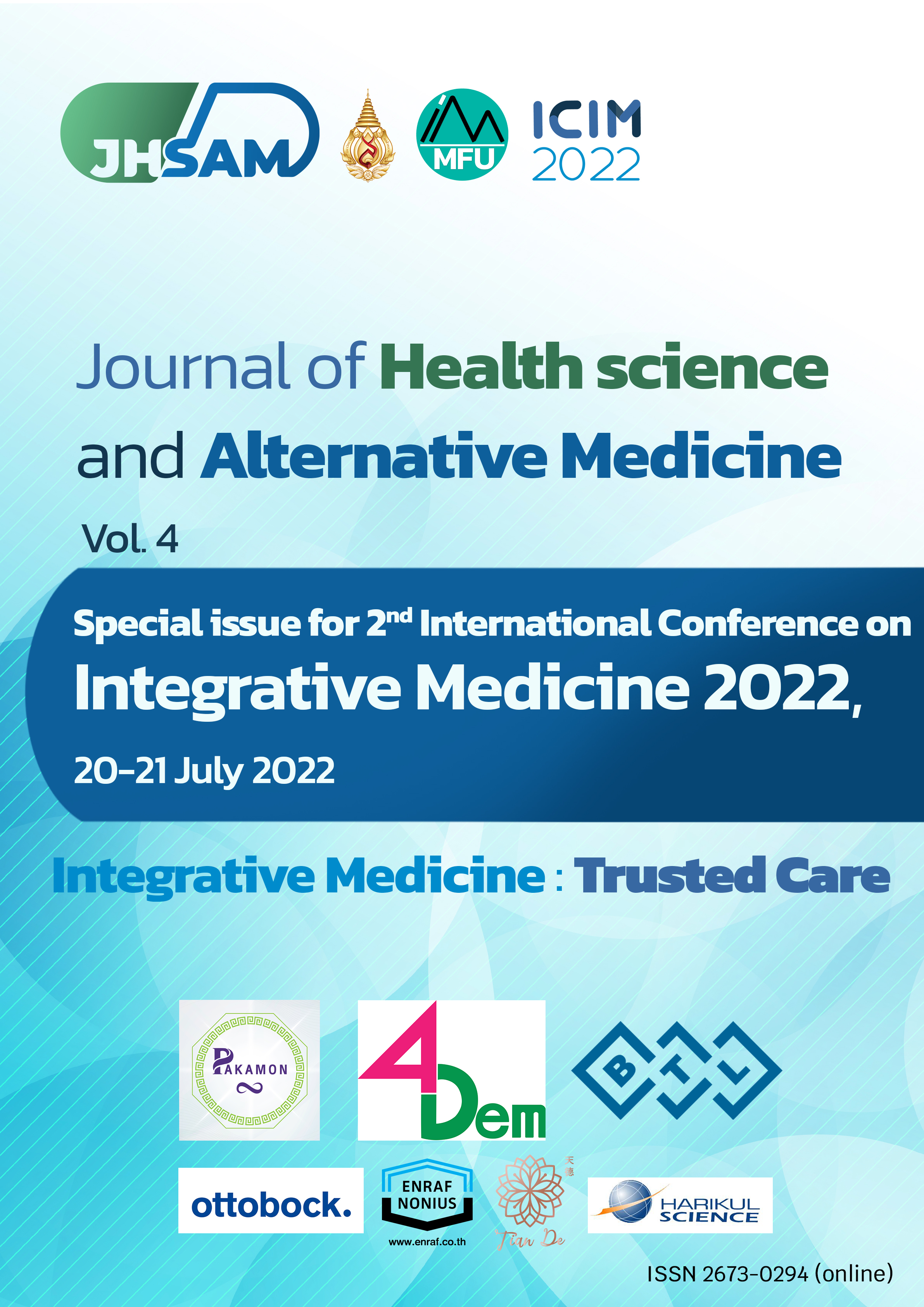C25. Molecular Characterization of the Full-length Bipartite Begomovirus Causing Pepper Yellow Leaf Curl Disease, a Common Cause of Crop Damage in Northeast and Central Thailand
Main Article Content
Abstract
Introduction: The incidence of the yellow leaf curl disease of pepper is an important and serious threat for the production of pepper in Thailand. The disease is caused by whitefly-transmitted begomoviruses which can lead to severe economic losses of the crop.
Objective: To determine and describe the complete sequences of begomovirus important species isolated from field infected pepper plants
Methods: In this study, six diseased samples of the Capsicum anuum plants (showing yellow mosaic and leaf curling symptom) were collected from outbreak areas during a survey in 2016 – 2019 and used to extract total DNA. The full-length viral genomes were amplified by rolling circle amplification technology (RCA), cloned and sequenced bi-directionally. The generated sequences were then assembled and characterized including their phylogenetic relationships with other selected begomoviruses.
Results: The sequences of the DNA-A genome from all six isolates showed the highest identity (97%) with the isolates of Pepper yellow leaf curl Thailand virus (PepYLCTHV). For the DNA-B component, it showed the closest cluster with those of PepYLCTHV (90% similarity).
Conclusion: Based on the literature review and current evidence, this is the report confirming the presence of the PepYLCTHV bipartite begomovirus from Thailand.
Article Details

This work is licensed under a Creative Commons Attribution-NonCommercial-NoDerivatives 4.0 International License.
JHSAM publishes all articles in full open access, meaning unlimited use and reuse of articles with appropriate credit to the authors.
All our articles are published under a Creative Commons "CC-BY-NC-ND 4.0". License which permits use, distribution and reproduction in any medium,
provided that the original work is properly cited and is used for noncommercial purposes.
References
Gupta D. An overview of capsicum. International Journal of Pharmaceutical and Biological Science Archive. 2016. 3(4).
Bhutia KL, Khanna VK, Meetei TNG, Bhutia ND. Effects of climate change on growth and development of chilli. Agrotechnology. 2018. 7(180).
Qin Y, Ran L, Wang J, Yu L, Lang HD, Wang X L, et al. Capsaicin Supplementation Improved Risk Factors of Coronary Heart Disease in Individuals with Low HDL-C Levels. Nutrients. 2017. 9(9), 1037.
Mason L, Moore RA, Derry S, Edwards JE, McQuay HJ. Systematic review of topical capsaicin for the treatment of chronic pain. BMJ. 2004 Apr; 24;328 (7446):991.
Gagnier JJ, van Tulder MW, Berman BM, Bombardier C. Herbal medicine for low back pain. Cochrane Database of Systematic Reviews 2007. 32: 82-92.
Tzubentula J, Kaushal, KJ. Entrepreneurial behaviour of king chilli growers in Peren district, Nagaland, India. International Journal of Current Microbiology and Applied Sciences. 2020. 9(3): 1783-1791.
Arimboor R, Natarajan RB, Menon KR, Chandrasekhar LP, Moorkoth V. Red pepper (Capsicum annuum) carotenoids as a source of natural food colors: Analysis and stability-a review. Journal of Food Science and Technology. 2015. 52(3): 1258-1271.
Mori A, Lehmann S, O'Kelly J. Capsacin, a component of red peppers, inhibits the growth of androgen-independent, p53mutant prostate cancer cells. Cancer Research. 2006. 66(6): 3222-3229.
McCarty MF, DiNicolantonio JJ, O'Keefe JH. Capsaicin may have important potential for promoting vascular and metabolic health. Open Heart. 2015. 2(1).
Charoenvilaisiri S, Seepiban C, Phironrit N, Phuangrat B, Yoohat K, Deeto R, et al. Occurrence and distribution of begomoviruses infecting tomatoes, peppers and cucurbits in Thailand. Crop Protection. 2020. 127, 104948.
Department of Agriculture Extension (DOAE). The production of hot pepper in Thailand. 2020. 37-38.
Varma A, Mandal B, Singh, MK. Global Emergence and Spread of Whitefly (Bemisia tabaci) Transmitted Geminiviruses. In W. Thompson (Ed), The Whitefly, Bemisiatabaci (Homoptera: Aleyrodidae) Interaction with Geminivirus-Infected Host Plants. Springer. 2011.
Gilbertson RL, Batuman O, Webster CG, Adkins S. Role of the insect supervectors Bemisiatabaci and Frankliniella occidentalis in the emergence and global spread of plant viruses. The Annual Review of Virology. 2015. 2, 67-93.
Khan MS, Raj SK, Singh R. First report of Tomato leaf curl New Delhi virus infecting chilli in India. Plant Pathology. 2006. 55(2): 289-289.
Kumar S, Kumar R, Kumar S, Singh AK, Singh M, Rai AB, et al. Incidence of leaf curl disease on Capsicum germplasm under field conditions. Indian Journal of Agricultural Science. 2011. 8, 187-189.
SenanayakeDMJB, Mandal B, Lodha S, Varma A. First report of Chilli leaf curl virus affecting chilli in India. Plant Pathology. 2007. 56(343).
Laprom A, Nilthong S, Chukeatirote E. (2019). Incidence of viruses infecting pepper in Thailand. Bio Molecular Concepts. 2019. 10(1): 184-193.
Dellaporta SL, Wood J, Hicks JB. A plant DNA minipreparation: version II. Plant Molecular Biology Reporter. 1983. 1: 19-21.
Tamura K, Stecher G, Peterson D, Filipski A. Kumar S. MEGA6: molecular evolutionary genetics analysis version 6.0. Molecular Biology and Evolution. 2013. 30: 2725-2729.
Briddon RW, Markham PG. Universal primers for the PCR amplification of dicot-infecting geminiviruses. Molecular Biotechnology. 1994. 1(2): 202-205.
Gutierrez C. DNA replication and cell cycle in plants: Learning from geminiviruses. EMBO Journal. 2000. 19: 792-799.
Chiemsombat P, Yule S, Srikamphung B. Begomoviruses associated to pepper yellow leaf curl disease in Thailand. Journal of Agricultural Reseach. 2018. 3(7): 1-11.
Brown JK, Zerbini FM, Navas-Castillo J. Revision of begomovirus taxonomy based on pairwise sequence comparisons. Archives of Virology. 2015. 160(6): 1593-1619.

